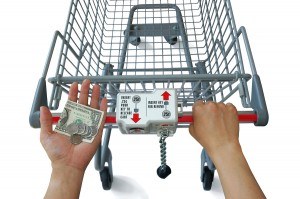2024 was another tough year for personal lines insurers and their customers.
In this space in late 2023, I wrote that seven of the 10 most read articles of 2023 were about the impacts of inflation and weather on auto and home loss costs, and personal lines insurers’ strategies to react to them.
Throughout 2024, articles about auto and homeowners insurance trends—or the results of personal lines insurers—still dominated the most-read articles list. Six out of the 10 most-viewed news articles published by Carrier Management this year are about those topics, including the top four.
#1 State Farm Underwriting Loss Climbs to $14B (March)
#2 GEICO’s ‘Eye-Popping’ 2023 Insurance Profits, Falling Employee Counts (February)
#3 AM Best Downgrades State Farm General Ratings (March)
#4 Why Homeowners Insurers Are Losing Money: Roofs Matter, Not Just Rates (October)
(Editor’s Note: The top 10 articles, based on reader views, make up the balance of the Dec. 31, 2024 Carrier Management Daily newsletter. The full list also appears at the bottom of this article, including articles about commercial liability insurance trends and technology.)
But the work that personal auto insurers have been doing to push up prices over the last two years started paying off in 2024, with some analysts predicting an underwriting profit for personal auto for the year.
“Substantial price increases and a moderation of severity trends will shift the segment to a break-even or better result in 2024 and an underwriting profit in 2025,” said Fitch Ratings, referring to personal auto results in an annual outlook report published in November. “Homeowners insurance will post a significantly lower underwriting loss in 2024 due to substantial price increases over the last two years,” Fitch Ratings analysts added.
Analysts at S&P Global Market Intelligence called for a full-year 2024 personal auto underwriting profit even earlier—back in July, when GMI analysts predicted a 98.4 auto combined ratio for the year.
Related article: Personal Auto Driving P/C Insurers to 2024 Underwriting Profit
More recently, in S&P GMI’s 2024 U.S. Auto Insurance Market Report published in early December, the analysts projected an even better result. Private auto results “will improve dramatically for a second consecutive year in 2024, with a projected combined ratio of 97.7 implying a return to underwriting profitability for the first time since a pandemic-aided result of 92.5 in 2020,” the report said.

Editor’s Note: The predictions reported in this article were made in late 2024 before the onset of wildfires in California in January, which could impact the results of personal auto insurers.
The projected 97.7 is also a notable dip from combined ratio levels of 104.9 in 2023 and 112.2 in 2022, according to S&P GMI’s calculations, which also show that direct premiums written grew more than 14 percent in 2023 (14.5 percent) and 2024 (14.2 percent).
“We expect that premiums written and earned projected will rise at much more rapid rates than incurred losses at the same time carriers continue to benefit from nonrate-related underwriting actions intended to deemphasize unprofitable business,” the report said, referring to 2024 estimated figure. “Since the turn of the century, private auto direct premiums written had only risen at a double-digit clip on one [prior] occasion: by nearly 10.2 percent in 2002.”
What about next year?
Both Fitch Ratings and S&P GMI expect personal auto insurers to record a profit, in aggregate, in 2025. But S&P GMI, which sets forth specific combined ratio projections for the next four years, indicates only a slim margin of profit for 2025—a projected combined ratio of 99.8—and 1.0-1.5 points of underwriting losses showing up again for the personal auto line in 2026-2028.
 “Beyond 2024, we anticipate the favorable underwriting results will precede a return to much higher levels of competition as carriers step up efforts to retain existing customers and attract new business,” the text of the S&P GMI report says. “We expect this will lead to a sharp reduction in premium growth rates as carriers eventually begin to file for rate decreases and limit further improvement in underwriting margins.”
“Beyond 2024, we anticipate the favorable underwriting results will precede a return to much higher levels of competition as carriers step up efforts to retain existing customers and attract new business,” the text of the S&P GMI report says. “We expect this will lead to a sharp reduction in premium growth rates as carriers eventually begin to file for rate decreases and limit further improvement in underwriting margins.”
Specifically, the report shows projected premium growth falling from the 14.2 percent level of 2024 to 4.1 percent in 2025, and down to 1.2 percent in 2026.
“In past underwriting cycles in the early 2000s and mid-2010s, premium growth rates rapidly receded from peak levels, reflective of the six-month terms of many private auto policies and the intense competition that typically characterizes the business,” the report said.
“Over the longer term, we expect competition to return with a vengeance in the private auto market as carriers gain comfort with the durability of improved underwriting results.”
A ‘Shop-A-Palooza’
Separately, viewing the future from the lens of the consumer, J.D. Power analysts predict an insurance ‘shop-a-palooza’ in store for 2025.
 Developing their insights for a “2025 Insurance Outlook Report“—a late December review of a year of reports about the propensity of U.S. drivers to shop and switch personal lines insurers in 2024, the J.D. Power analysts noted that soaring insurance prices sent customers shopping throughout 2024. By the third quarter, auto insurance shopping rates had reached a record high. “However, with virtually every carrier increasing rates, all those shoppers had very few alternatives and many stayed put.”
Developing their insights for a “2025 Insurance Outlook Report“—a late December review of a year of reports about the propensity of U.S. drivers to shop and switch personal lines insurers in 2024, the J.D. Power analysts noted that soaring insurance prices sent customers shopping throughout 2024. By the third quarter, auto insurance shopping rates had reached a record high. “However, with virtually every carrier increasing rates, all those shoppers had very few alternatives and many stayed put.”
“Now, that’s all about to change,” they predict.
With 2024’s return to profitability at hand, J.D. Power sees 2025 as “a major tipping point for policy shopping and switching.”
“After the past three years spent shoring up their operations and scaling back growth initiatives, insurers are going to be on the hunt for new customers in 2025, and all indications are that customers will be more than willing to comparison-shop their policies and jump ship for a better rate,” J.D. Power says.
J.D. Power’s quarterly loyalty indicator and shopping trends (LIST) report for third-quarter 2024 showed policy shopping activity for personal auto insurance hitting a record high of 13.8 percent in September. Since then, J.D. Power reports that shopping rates have stayed elevated, hitting 13.8 percent again in October and dropping only slightly, to 13.6 percent, in November.
Switch rates peaked at 4.6 percent in August, but as “more competition starts to heat up between carriers, switch rates may increase further in 2025,” the J.D. Power analysts predict. Throughout 2024, monthly switch rates ranged from 3.9 percent to 4.6 percent. In 2023, switch rates ranged from 3.1 percent to 3.9 percent.
Drilling down on how the business moves between carriers when customers decide to switch, J.D. Power’s third-quarter LIST report found that when any of these six top-10 carriers lost business—Allstate, American Family Insurance, Farmers Insurance, GEICO, Liberty Mutual Insurance or State Farm—they were most likely to lose their auto insurance customers to Progressive. If Progressive lost a customer, it most likely went to GEICO, the third-quarter J.D. Power List report said.
Related article: Progressive Gains as Drivers Shop Around for Auto Insurance—Again
What Do Carriers Say?
It’s not surprising that Progressive’s Chief Executive Officer Tricia Griffith reported that across its businesses during the third quarter of 2024, the carrier added almost 1.6 million policies in force—”the most we’ve ever added in a quarter.”
 Speaking during a third-quarter 2024 earnings conference call, Progressive’s CEO said the company experienced very strong demand for its personal lines products across distribution channels—agency and direct. “While direct channel new application growth responded almost immediately to our increase in media spend and the release of nonrate actions earlier in the year, as evidenced by the channel’s stronger new business growth in Q2, the agency channel’s growth potential wasn’t fully realized until the last few weeks of the second quarter. The result is a third quarter where our growth machine was firing on all cylinders with clear results in both channels experiencing record levels of new applications,” she said.
Speaking during a third-quarter 2024 earnings conference call, Progressive’s CEO said the company experienced very strong demand for its personal lines products across distribution channels—agency and direct. “While direct channel new application growth responded almost immediately to our increase in media spend and the release of nonrate actions earlier in the year, as evidenced by the channel’s stronger new business growth in Q2, the agency channel’s growth potential wasn’t fully realized until the last few weeks of the second quarter. The result is a third quarter where our growth machine was firing on all cylinders with clear results in both channels experiencing record levels of new applications,” she said.
Noting that the insurer capitalized on a high level of “ambient shopping” in personal auto, Griffith said: “In Q3 2024, we spent more on media than in any quarter in our history. The result was a higher number of direct channel prospects than any quarter in our history, surpassing Q2 2024, the previous record holder.”
“Additionally, conversion is strong, suggesting that we are well-priced compared to the competition,” Griffith told analysts.
S&P GMI’s report noted the 2024 uptick in advertising from auto insurers. The report noted that ad spend had “cratered in 2023 amid a tightening in underwriting guidelines and a reluctance to aggressively pursue new business. In particular, the report noted that the ratio of ad spend to direct premiums for the two leading marketers of auto insurance—GEICO and Progressive—” along with the balance of the industry plunged to the lowest levels in many years.”
“Our expectations of a return to much more competitive environment by 2025 strongly implies that 2023 represents the bottom for ad spend,” the S&P GMI report said.
Given the fact that Progressive’s year-to-date results—a combined ratio of 89 across the company and 88 for personal auto—were already much better than a targeted combined ratio of 96 at the time of the third-quarter earnings conference in early November, one analyst wanted to know if price cuts were in the cards for 2025.
Griffith responded, “We will watch trend carefully,” noting that while the carrier cut prices in about nine states during the quarter, prices in other states went up a little. She said Progressive will continue to use media spend to fuel organic growth. “But we will see states and channels and products where we have to increase rates a little bit as well,” she said, referring to a long-term desire to keep rates relatively stable, taking “small bites of the apple” to stay ahead of loss trend. “We believe we’re really well positioned to continue to grow,” she said.
At Allstate, Mario Rizzo, president of property-liability, revealed a nearly 3-point drop in auto insurance customer retention for his company between 2022 and third-quarter 2024, noting that this corresponded to a 36 percent cumulative increase in rates over the last 10 quarters. “Raising prices leads to lower retentions as customers shop for other options,” Rizzo said.
“Looking forward, we expect lower rate increases given the profitability of auto insurance. This year, for example, Allstate brand rates have been increased by 6.3 percent compared to 9.5 percent in the first nine months of last year.”
“Lower price increases should translate into higher retention,” he said.
Turning to new business, Rizzo noted a 26 percent jump in new auto insurance applications in the third quarter at Allstate. “While profit actions previously restricted our new business appetite, rate adequacy has now been achieved in the vast majority of states. Third-quarter advertising spend was roughly 60 percent higher than the same quarter in 2021,” he added.
In the direct channel, which represents 31 percent of total auto new business for Allstate, new business applications soared by 56 percent. “In the direct channel, we are back to 2022 levels with fewer underwriting restrictions, increased advertising and the new affordable, simple and connected auto product, which is currently available in 25 states,” Rizzo said.
Pressed by an analyst who wanted assurance that Allstate could grow policies in-force in 2025 despite rising competition on ad spend and pricing, Rizzo reiterated that given current profit margins, Allstate expects “to take less rate going forward, which will have a positive impact on retention…But the other side of it is, we’re not just going to rely on that. We’ve got actions in place in a number of areas [to improve] the customer experience. [We are] working with our customers, both through our agents and our contact centers, to help identify opportunities to improve affordability, and really mitigate shopping activity from our own customers.”
Allstate CEO Tom Wilson expanded on the answer. “When auto profitability went negative, we said [our] first priority [is to] get the rate…What Mario [Rizzo] is talking about now is going back in and saying, ‘OK, we got the total rate. How many more people should be using Milewise [Allstate’s pay-per-mile insurance plan]? “How many more people should be using telematics?”
“Those are great opportunities for us to leverage our innovation and keep more customers,” he said.
UBI Tipping Point?
J.D. Power, in fact, sees the move to telematics-based pricing as another auto insurance trend to watch in 2025.
 “Another major tipping point we expect to see in the year ahead is more widespread adoption of usage-based insurance (UBI) policies, the 2025 Insurance Outlook Report” says, referring to policies that use telematics technology to track customer driving patterns and offer discounts based on safe driving and fewer miles driven.
“Another major tipping point we expect to see in the year ahead is more widespread adoption of usage-based insurance (UBI) policies, the 2025 Insurance Outlook Report” says, referring to policies that use telematics technology to track customer driving patterns and offer discounts based on safe driving and fewer miles driven.
J.D. Power data currently shows that even though many drivers consider UBI policies when shopping for auto insurance, just 17 percent ultimately buy them. “While that’s double the rate of UBI uptake we saw eight years ago …, it still reflects a surprising plateau considering the hunt customers have been on for premium savings in the face of rising rates.
Related articles: J.D. Power UBI Scores vs. Overall 2024 U.S. Auto Insurance Satisfaction Scores; GEICO Tops Progressive With Higher J.D. Power Scores; Reporter’s Notebook: ‘Nobody Else Does Telematics,’ Lemonade Exec Says
Part of the explanation is perhaps revealed by another data point J.D. Power shared, noting that insurers pulled back on offering UBI programs to their customers in 2024 as they focused on returning to profitability through rate hikes. According to J.D. Power, just 15 percent of insurance shoppers were offered access to UBI programs when shopping for their policies this year, down from 22 percent in 2023.
J.D. Power has also found that customer satisfaction scores are higher for drivers who opt into UBI programs—64 points higher (on a 1,000-point scale) for new customers opting in compared to those that choose not to participate in UBI programs.
“The bump in customer satisfaction that’s coming from UBI, combined with a surge in rate-driven shopping and switching activity and continued interest among insurers in courting new customers have set the stage for a significant jump in UBI adoption,” J.D. Power predicts.
***
Carrier Management 10 Most-Read News Articles of 2024
- State Farm Underwriting Loss Climbs to $14B (March)
- GEICO’s ‘Eye-Popping’ 2023 Insurance Profits, Falling Employee Counts (February)
- AM Best Downgrades State Farm General Ratings (March)
- Why Homeowners Insurers Are Losing Money: Roofs Matter, Not Just Rates (October)
- Top 5 Technology Predicaments Facing Insurance Leaders (August)
- Early 2024 Atlantic Hurricane Forecast Predicts Highly Active Season (January)
- Liability Reinsurance Crisis Could Be Looming, CEO Says (June)
- AI Large Language Models Not Leaving Chubb’s Greenberg ‘Breathless’ (June)
- More P/C Carriers With Less Surplus: Aon Ward Analysis (January)
- Millennials, Gen X Push Ahead of Gen Z in Homeownership in 2023 (January)





















 California Wildfires Had Little Impact on Reinsurers’ Risk Appetite During April Renewals
California Wildfires Had Little Impact on Reinsurers’ Risk Appetite During April Renewals  Allstate: How Can You Save on Auto Insurance?
Allstate: How Can You Save on Auto Insurance?  Tiffany Diamonds Worth $770K Recovered 2 Weeks After Suspect Swallowed Them
Tiffany Diamonds Worth $770K Recovered 2 Weeks After Suspect Swallowed Them  The Future of Premium Audits: Using AI Assistants to Streamline Data Collection
The Future of Premium Audits: Using AI Assistants to Streamline Data Collection 














